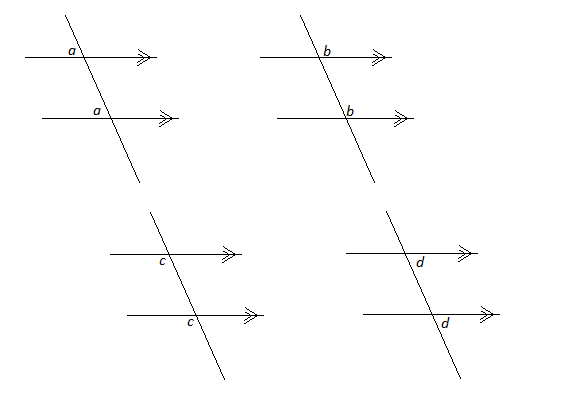Corresponding Angles
Corresponding angles
Corresponding angles in parallel lines are equal.
A pair of angles are said to be corresponding if
- the angles are made from two parallel lines and 1 transversal line (line that crosses the parallel lines)
- the angles are not adjacent (not next to each other)
- the two angles do not share a vertex
- the two angles appear in similar positions on the parallel lines.
In these images, the alternate angles are marked.

We can use a picture like this to help us remember this rule.

Corresponding angles in parallel lines are equal.
(To help remember this is sometimes referred to as the F rule).
This interactive shows you how alternate angles are equal. You can move the parallel lines, and the transversal to create different angles. You can also move the parallel lines to be on top of each other. When you do this you will see that corresponding angles are equal because they appear in identical positions on lines that create the same angles. (Watch this video if you would like to see this interactive in action - )
Worked Examples
Question 1
Calculate $x$x giving reasons for your answer.
Question 2
Find the value of $x$x in the diagram given.